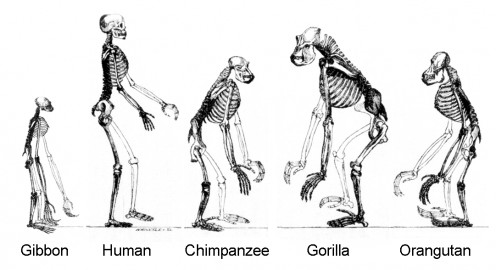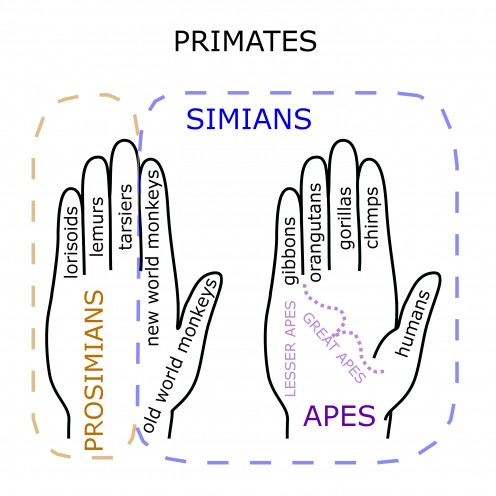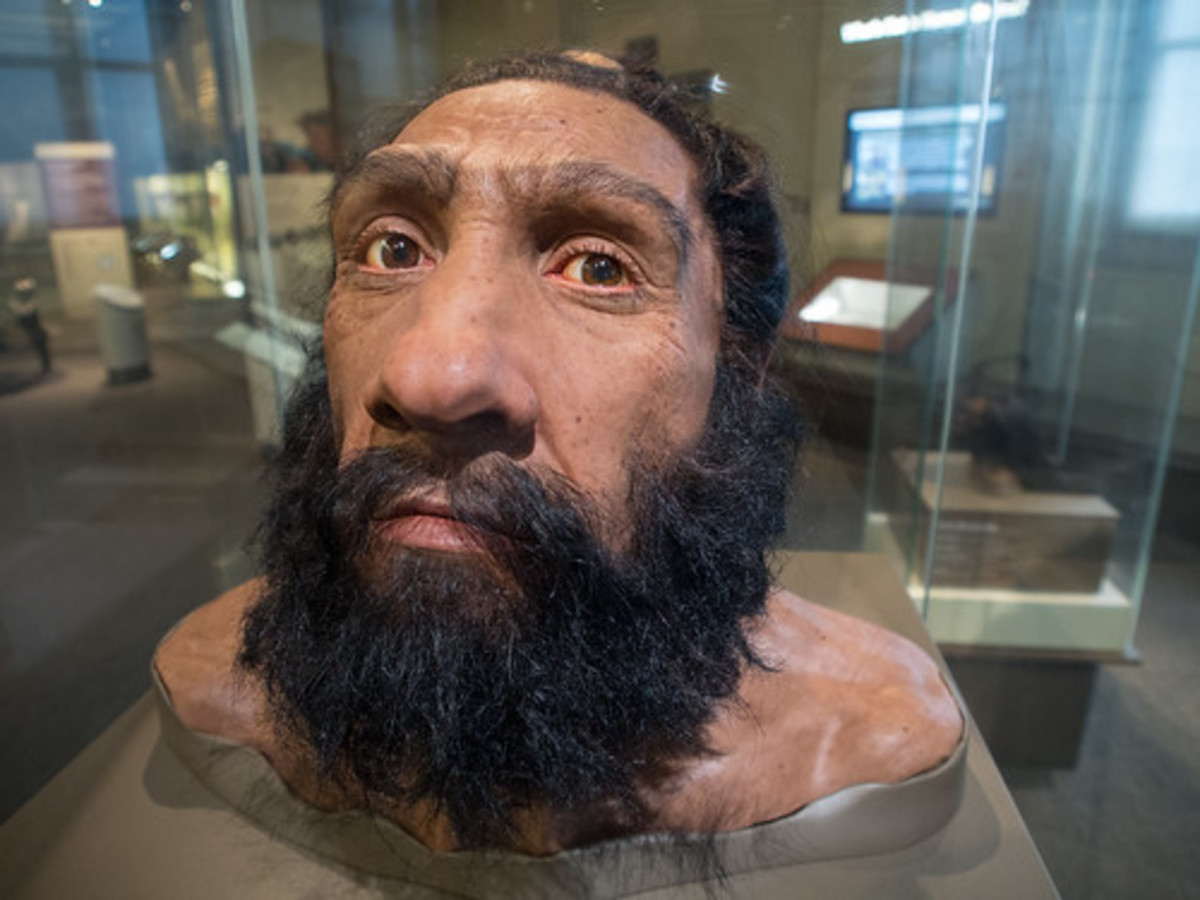What Makes Us Uniquely Human?

Introduction
Homo Sapiens Sapiens is an interesting species, because it is our species. That is what we are. We are descendants of a variety of subspecies of the genus Homo, more directly Homo Sapiens. For example, Europeans are adapted in part from the subspecies Homo Sapiens Neanderthalensis. But, what separates us from the other primates? Are we unique in any way? Well, I would personally suspect that all organisms are unique, but what defines us? The old Kemetians tell us to this day to "know ourselves" (as did the Greeks and Jesus of Nazareth in 'The Gospel of Thomas). What makes us different from chimpanzees and bonobos?

Verbal Language
Unlike our relatives, the bonobos and chimps - humans often seem to prefer spoken communication instead of sign language (a common form of communication among the chimpanzees and bonobos). It is hard to state exactly what aided in the synthesis to this phenomenon. Still, as the shape of the head is also relatively unique, we may hypothesize that increased quantities of specified vocalizations may have been a change that occurred as the general shape of the head also changed.
Absence of Hair
Although humans are not the only primates who swim, we are amongst the few who do. Could the aquatic ape hypothesis be true? It could explain why humans have such an absence of hair in particular parts of the body. The mustache may have a different story to tell, and may have something to do with the fact that our ancestors once were in the possession if whiskers. Regardless, the average human being is much more absent of hair than the average bonobo being. Yes, this is even true for the European man, though perhaps to a lesser extent. Let us not fool ourselves; we are generally still covered from head to toe in hair. But, hair length plays a big role on this topic.
Melanin in the Eyes
Possibly one of the more shocking differences between humans and other primates, is the lack of melanin in our eyes. We have white eyes, whereas other great apes have brown eyes. Why did this occur in our evolution? Based on study that has been done, the whites of the eyes seem to act as an indicator of attention to surrounding humans. However, why humans focus on the slerae instead of the head as a whole is a mystery that may take many years and many talented people to fully understand. One possible answer is that the sclera, when it is absent of pigmentation, is easier to see when there is less light. Were some of our ancestors nocturnal animals? When we climbed back down from the trees, did our eyes help us to see each other in the darkness of the forest bottoms? You may wish to take some time to meditate on such questions.
Phallic Spines
Many adult males in the human species have the vestigial remnants of phallic spines. These sometimes develop in latter adulthood, and can be mistaken for sexually transmitted infections (STI's). Like many mammals, our ancestors had keratin-based spines on the male genitalia. Such penile spines seem to be absent in chimps and other apes. Although, let us be honest; human genitals have been studied in greater depth by humans than have other species' genitals. As we are humans, it would make sense that we pay more attention to ourselves than to, say, gorillas. However, if there is something to this, then humans may be the only surviving apes to have preserved this trait. Perhaps penile spines were a desirable mating trait for our female ancestors. Who knows? And, maybe we will one day. For know, all we can do is hypothesize and speculate that phallic spikes may be a trait which separates us from other closely-related primates.
Standing Tall
Unlike other apes, humans stand the straightest. Our spines make us stand very tall, and not surprisingly we appear to be the apes with the most back and spinal problems. I remember an ex-girlfriend explaining to me her back pain when she was only 19 years old. Why did we begin to stand trait? Maybe it has helped our ancestors to scare off predators. Perhaps taller males was desirable to females. I have talked in some depth how human and chimp cultures have a high tendency towards matriarchal societies. Why we stand so erect is still a bit of a mystery.
Ten Fingers
Humans have twenty digits, but we primarily only use the first ten. Although the feet's fingers can be used (at times to grab dropped items, and they can sometimes be applied in mating rituals), we focus principally on the hands' fingers. The possession of four hands would seem like an advantage. The morphing of our third and fourth hands hasn't been entirely appealing to many modern humans. So, why has it occurred? Was it for a reason that was in conjunction with our standing taller? Did better running aid us in escaping our enemies? Possibly a combination of the two? I suspect our ability to run across the African landscape did help our forefathers to survive and live long enough to have children of their own.
Well Endowed Males
One final item that makes humans particularly unique is that our males have (on average) the longest erect phalli of all living apes. The one inch of the gorilla has nothing on us. Why is this? Let's go back to my mention of matriarchal cultures. Gorillas are primarily patriarchal. They gain many wives. They're aggressive and tough from the chest up. But, it is the males of this species who chose the mate. It is for this reason, I conclude, that gorillas only have one inch to play with. Humans and chimps (by general estimations, average 6 inches and 3 inches respectively) have much more to give their mate on the night (or day) of confirmation. I believe that this is because human and chimp cultures have a much higher tendency to be matriarchal. When the female can chose who to mate, she can pick the traits in her male that she likes the most. Transcending all cultures seems to be a desire towards males with larger phalli. Many modern humans complain about a patriarchal society or societies among modern humans in the western world. If this exists at all, then it may exist as an illusion. From one of my own anecdotes; when I am in church every Sunday - I so often hear other priests remind me and each other of the dominance of the women in our lives. Females are very important to human and chimp societies (generally speaking), and it is partially for this reason that our two close species have such long privy members.
Have you learned anything new from this article?
© 2019 Alexander James Guckenberger








